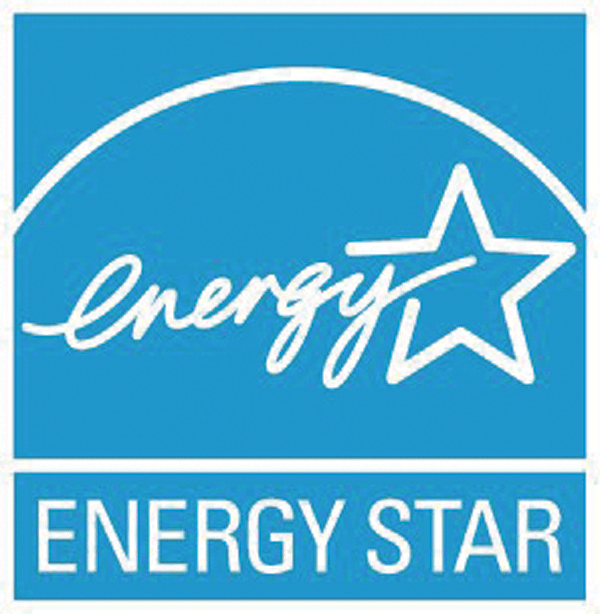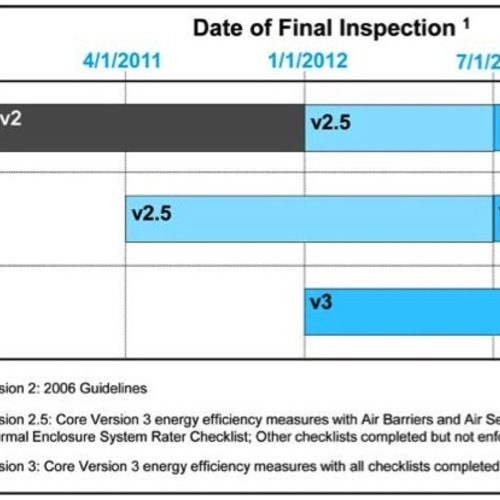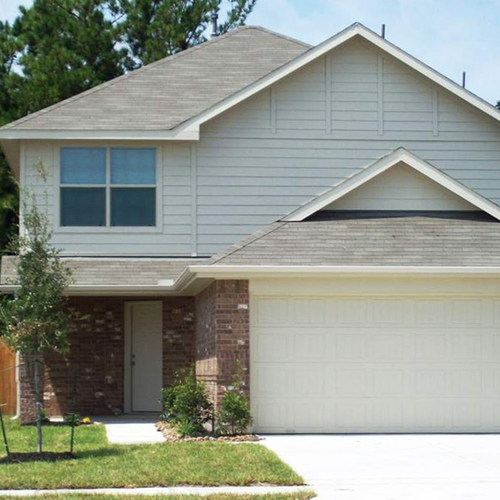
_New Standards Push the Energy Envelope 50% Past 2006 IECC_
A couple of interesting announcements from Sam Rashkin, the national director of Energy Star for Homes: new standards that raise the bar, and a new program, Advanced New Home Construction, for the best builders in the country.
The new Energy Star specs include the following:
- Thermal breaks in walls. When studs touch the inside and outside surfaces of a wall, they cut the R-value of the wall significantly.
- Correct installation of HVAC systems. EPA calls this “best practice installation.” Poor installations slash the efficiency of an HVAC system by 35% (or more!).
- Efficient water distribution, particularly for hot water. Hot water sitting in a tank, waiting to be used, cools. These standby losses at the tank are significant. According to Energy Star, standby losses in pipes can be equally significant.
- Better lighting, appliances, and plug-load management. These loads account for over half of electricity use in homes (major appliances—24%; lighting—18%; miscellaneous—14%).
- Size limits on Energy Star homes. The Home Energy Rating System (HERS), which scores Energy Star homes, inadvertently penalizes small homes by making it easier for very large homes to meet the energy efficiency requirements.
- Moisture control. Because tight houses have less drying potential, durability details must be well thought out.
These updates lay the groundwork for another EPA program. Advanced New Home Construction will push the energy envelope 50% past the 2006 International Energy Conservation Code. To get there, builders will:
- Superinsulate the walls. An airtight wall with perfect insulation and no thermal bridging has a 50% higher R-value.
- Install super-efficient high-performance windows. They can block nearly 85% of solar heat gain while delivering R-8 thermal resistance. (Typical Energy Star windows block 70% of solar heat gain and deliver R-3.)
- Install airtight air handlers with high-efficiency variable-speed fans. HVAC systems often leak 35% of the air they transport. Half of that leakage is from the air handler. And today’s fans gobble up 70% more energy than necessary. Sealed air-handler units are available and super-efficient fans are about three years away.
- Install super-high-efficient HVAC equipment that’s SEER 18 (rather than 13) for air conditioning, >9.0 HSPF (rather than <8).
- Install solar domestic water-heating system. Most solar water heaters can handle 50% to 90% of the water-heating needs of a household.
The Advanced New Home Construction program is not open to all builders; it has requirements for participation. As such, EPA is looking for “the nation’s most energy efficient builders seeking recognition as environmental leaders” to join the Advanced New Home Construction program.
To learn more about the program, go to www.energystar.gov/homes next September.
—Dan Morrison is managing editor of GreenBuildingAdvisor.com.
Weekly Newsletter
Get building science and energy efficiency advice, plus special offers, in your inbox.















0 Comments
Log in or create an account to post a comment.
Sign up Log in